As a seasoned traveller, I’ve been fortunate to explore many beautiful destinations worldwide, but Lake Como in Northern Italy has always held a special allure. My recent stay in Blevio, with visits to nearby Como and Bellagio, offered a delightful taste of the elegance and natural beauty that this region is renowned for.
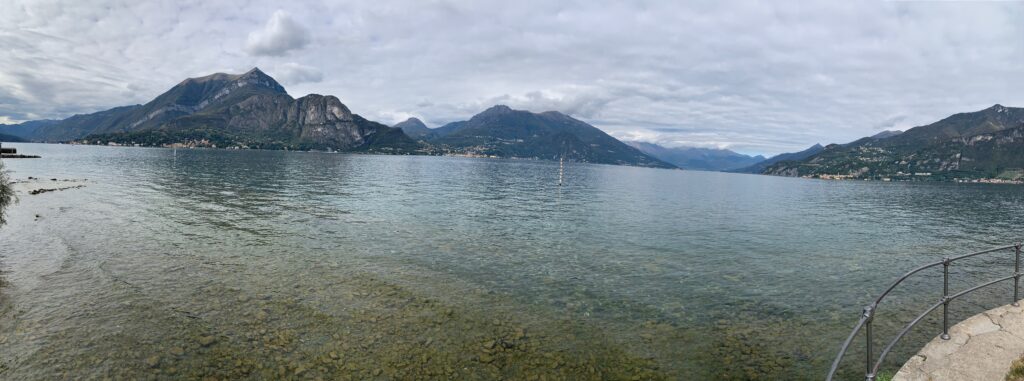
Where is Lake Como?
Lake Como (Lago Di Como)’s strategic location is one of its most attractive features., conveniently situated at the crossroads of Switzerland and Italy, making it a gateway between the two countries. The town is approximately 40 kilometres (25 miles) north of Milan, Italy’s fashion and business capital. Additionally, Como is a short distance from the border with Switzerland, providing easy access to cities such as Lugano and Zurich.
Geography of Lake Como
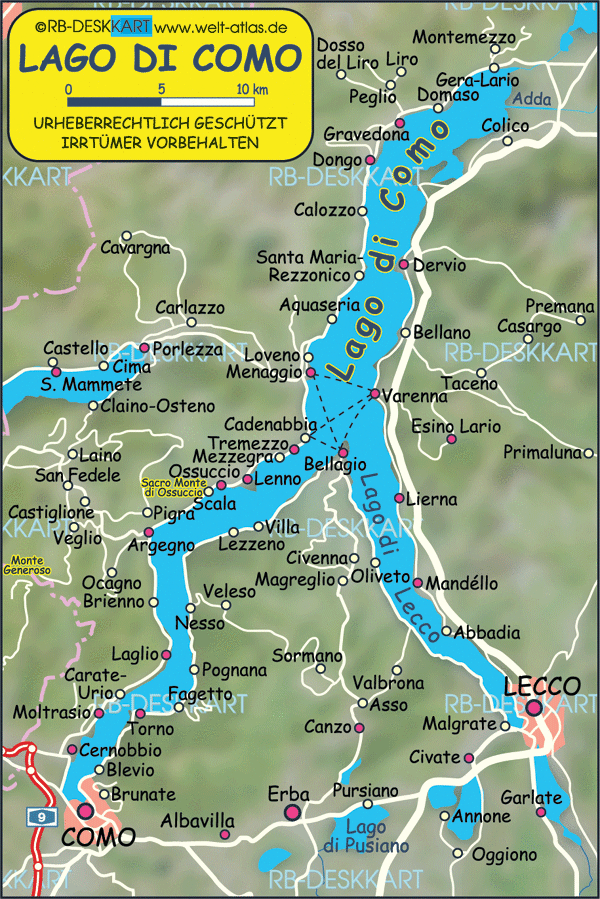
The lake itself, is often considered one of Italy’s most beautiful. It is a product of the action of massive glaciers moving through the region, approximately 10,000 years ago. This glacial activity created the deep, narrow, and fjord-like shape for which Lake Como is renowned.
With a distinctive upside-down Y shape, Lake Como stretches over 146 square kilometres, offering breathtaking vistas of the surrounding mountains. Como, he town is situated on the southwestern branch of the lake, where the surrounding landscape is characterized by lush vegetation, providing a stunning contrast to the picturesque lake. The town’s proximity to the lake and the surrounding terrain makes it an ideal destination for nature lovers, offering a perfect blend of scenic beauty and historical charm.
The Lake in History
It has been a focal point for both historical events and artistic inspiration. It was a crucial centre for trade during the Roman Empire and later, it became a sought-after retreat for aristocrats during the Renaissance and subsequent periods. During World War II, it played a role as a clandestine escape route.
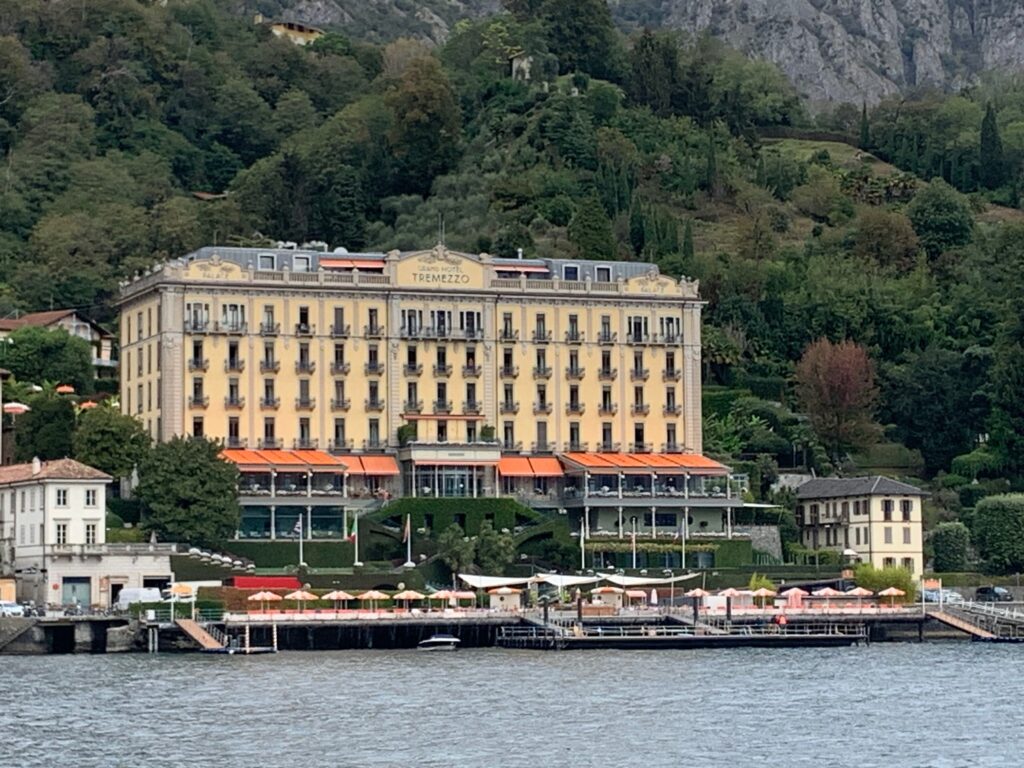
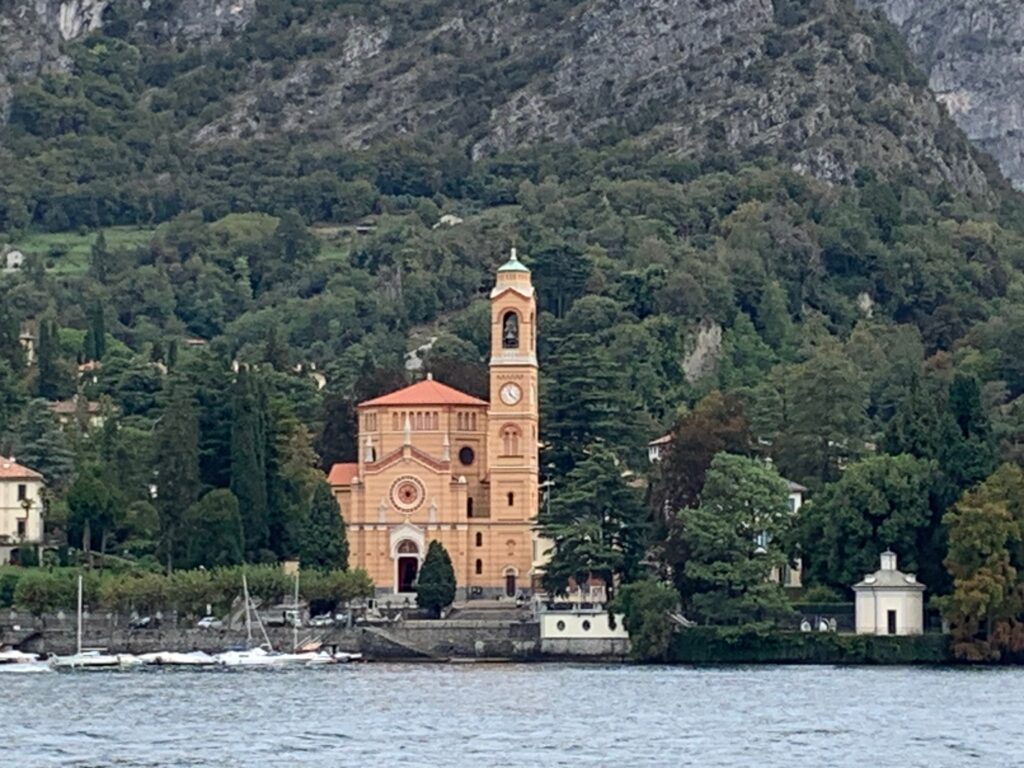
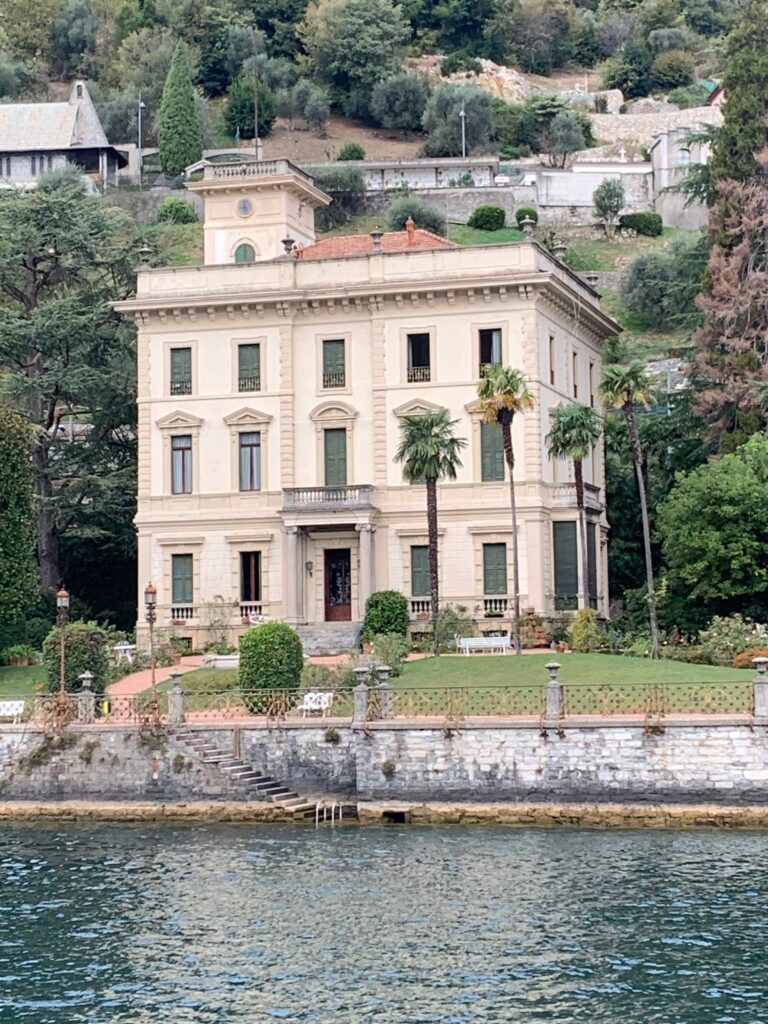
Como: A Stroll Through History
We spent hours exploring the meandering streets and elegant squares of Como, discovering churches. local and international boutiques, and indulging in gelato. I couldn’t resist the call of the Gelato shops, serving rich, creamy scoops in an array of delightful flavours (my go tos are Baci, Limone and Zabione). Como’s historical centre, with its well-preserved architecture and ancient city walls, is a testament to its long and fascinating history.
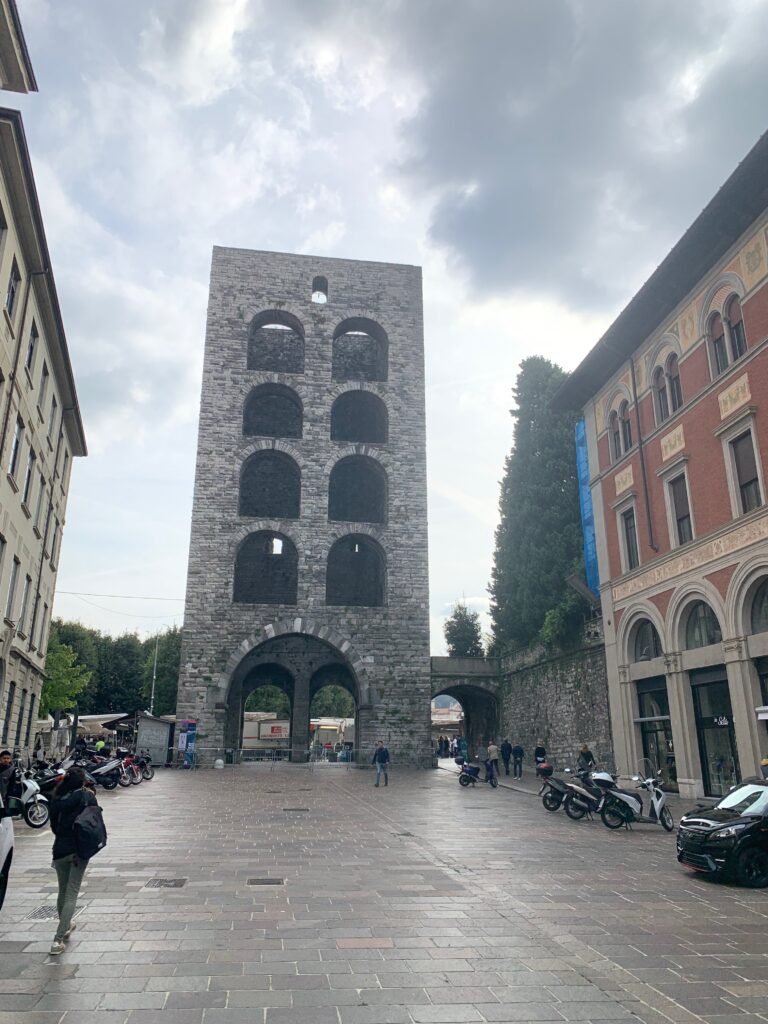
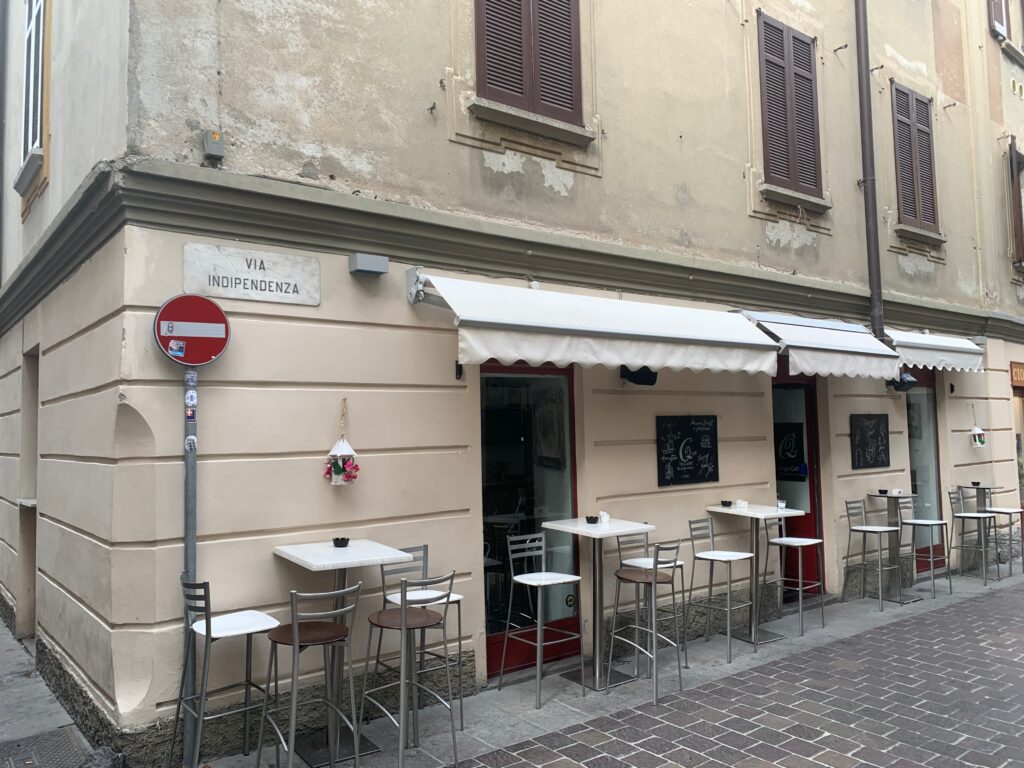
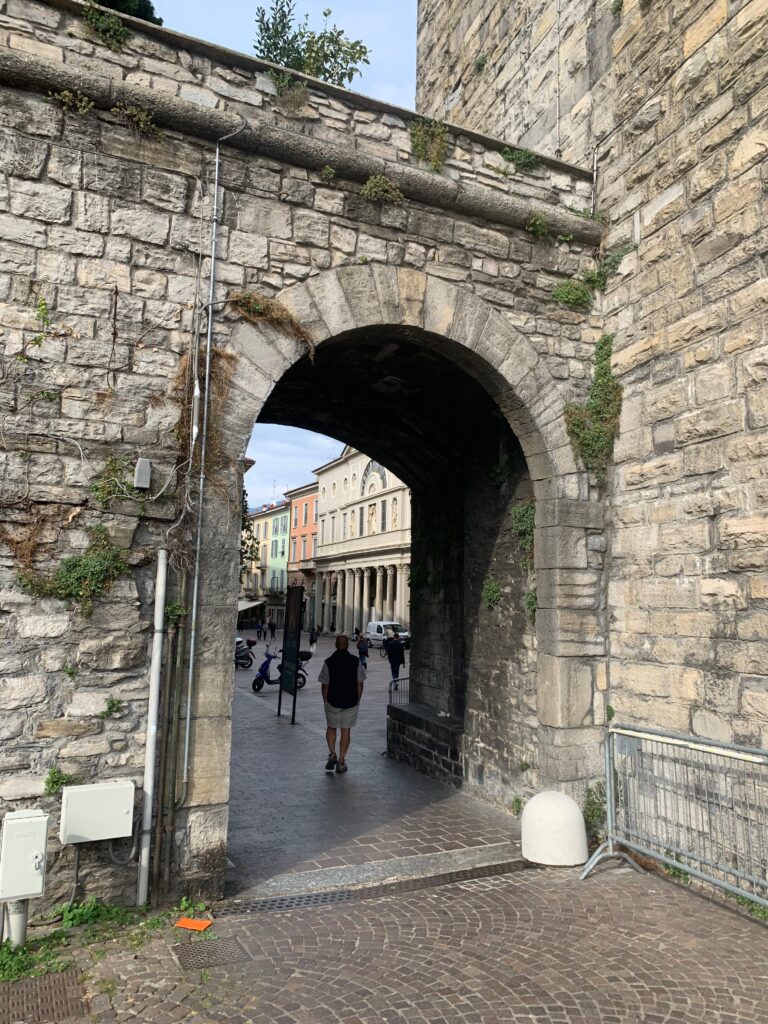

Founded by the Romans in the 1st century BC, Como was originally known as Novum Comum. You can still see Roman ruins in a couple of spots. Como played a significant role in the Roman Empire, serving as a transportation and trade hub. Over the centuries, the town has witnessed various rulers and influences, including the Visconti and Sforza families during the Middle Ages and Austrian rule in the 18th century.
A visit to The stunning Duomo, a beautiful Gothic cathedral, is a must. Nominally free, an eagle-eyed attendant hovered over two strategically placed “donation boxes” and pouncing on anyone not contributing calling out: “one euro, one euro“!
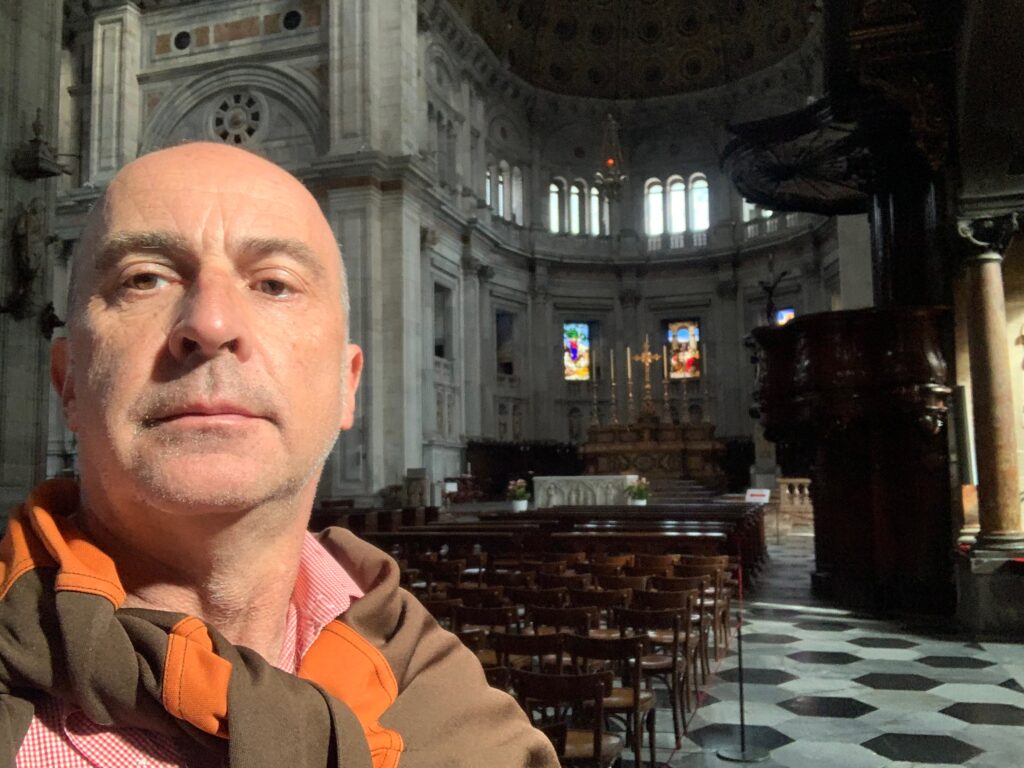
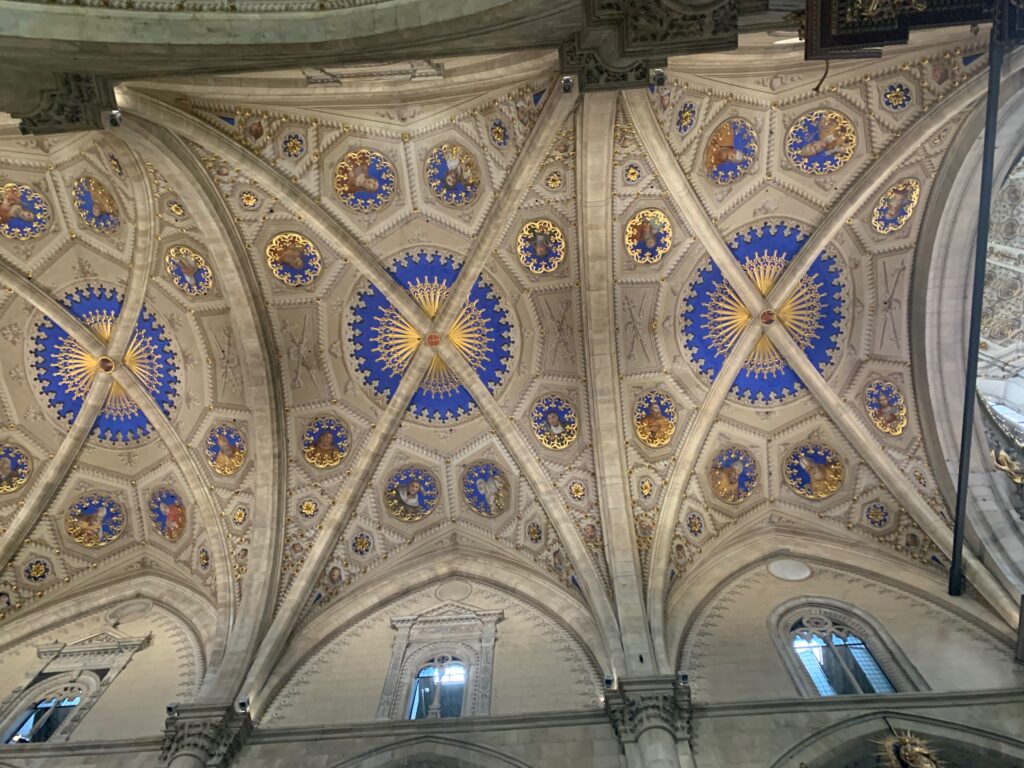
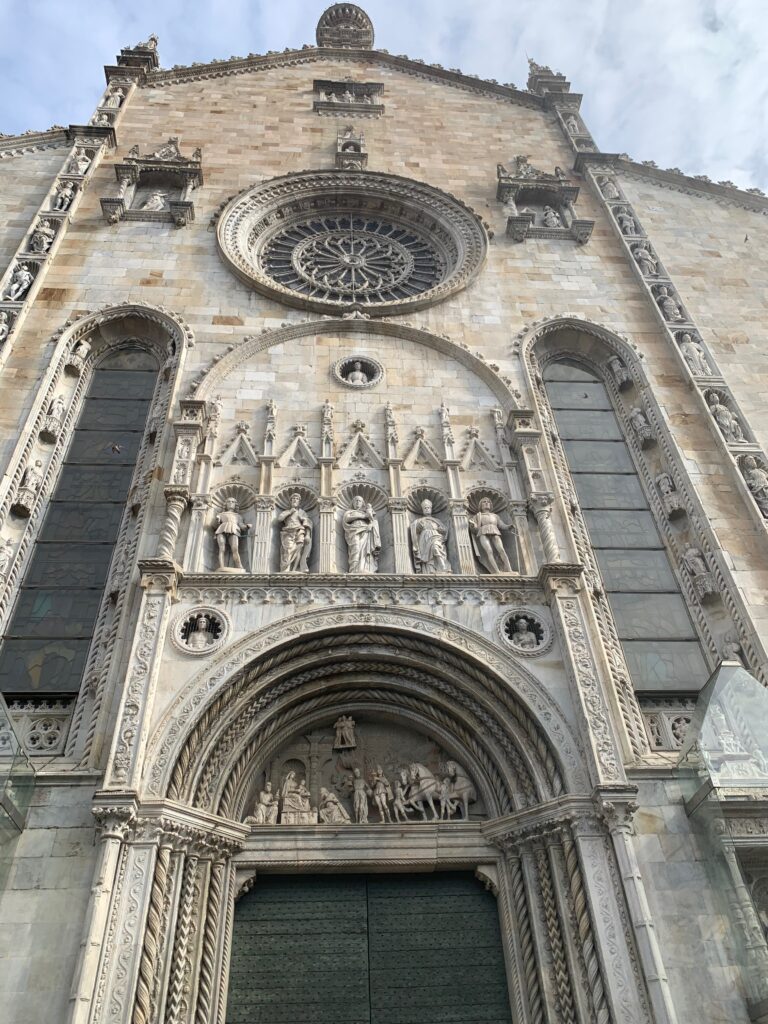
The waterfront promenade in Como is an enchanting place for a leisurely walk and to observe the elegant boats gliding across the lake and the vibrant colours of the surrounding buildings. They are currently doing a lot of work on the waterfront which means walking is interrupted and tarffioc has been diverted but there is still enough to see.
The meal we enjoyed near the promenade was the perfect way to savour the moment. The tranquil lake, bathed in the golden glow of the setting sun, was a sight to behold. It was the perfect backdrop for unwinding with a glass of prosecco and reflecting on the day’s adventures.
A highlight of my visit to Como for this train nerd was the funicular ride to Brunate. The one-kilometre line which opened in 1894, climbs 496 metres with a 55% maximum gradient. Its two trains -one painted red and the other painted purple, transport both locals and tourists . The ascent offers panoramic views of the lake and the town of Como.
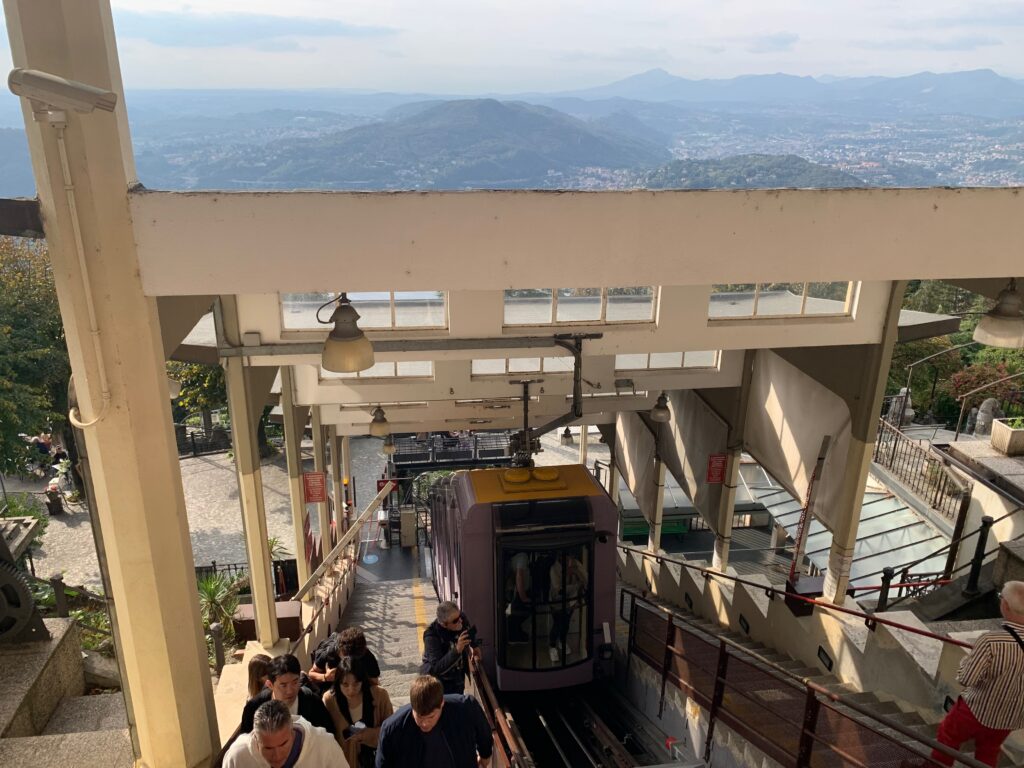
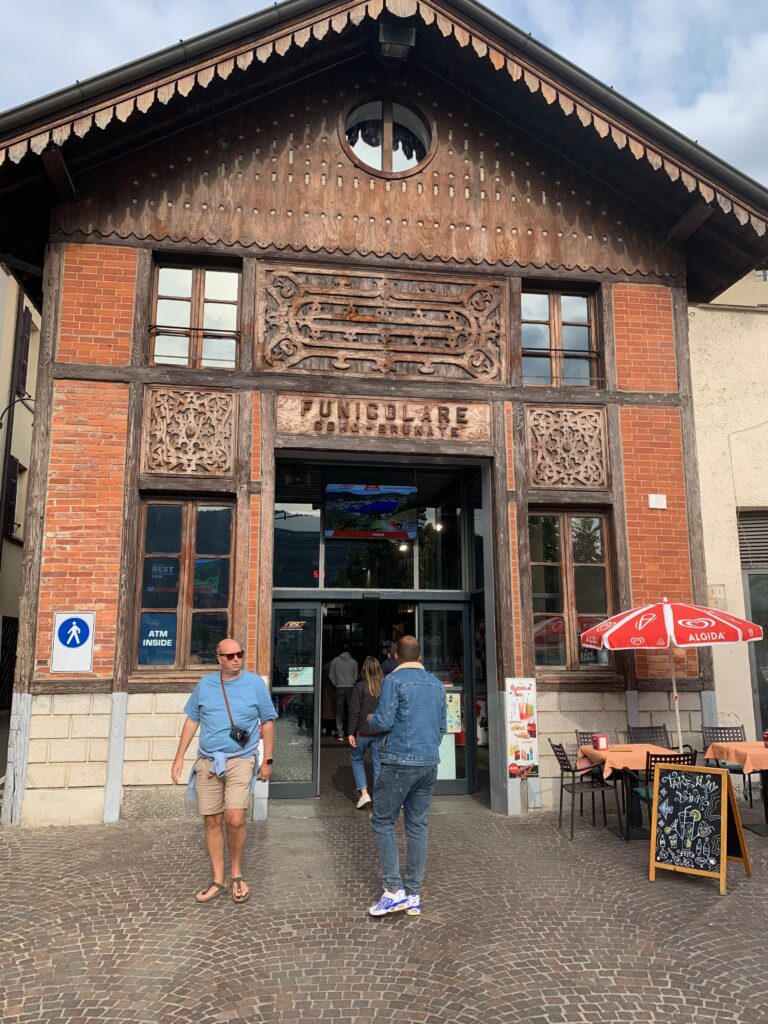
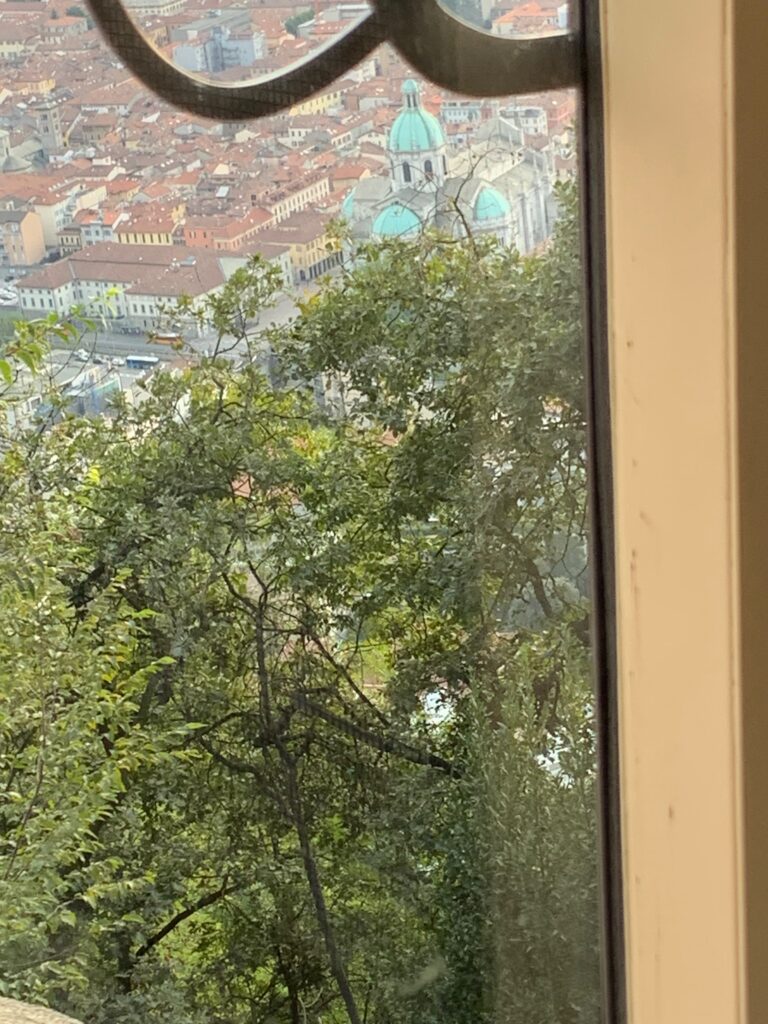
When I reached the summit, I understood why this had been a favourite retreat for thousands of visitors, as we enjoyed coffee overlooking the Lake and Como town. From the top, you can hike down or take a bus or jeep tour to the Volta Lighthouse Tower, an octagonal tower 29 meters high built in 1927 on the summit. The Church of Saint Andrew , the apostle is a short walk from the funicular station and there is the Campari fountain, a little further on. It was sculpted in marble in 1933 and paid for by Campari famous for their red drink. Sadly, it is not Campari but water in the fountain!
Bellagio: The Pearl of the Lake
No journey to Lake Como would be considered whole without immersing oneself in the town of beauty of Bellagio. Often hailed as the “Pearl of Lake Como,” Bellagio sits gracefully at the convergence of the lake’s three branches. With its splendid gardens, picturesque promenades, charming cobblestone streets, and enchanting waterfront vistas, it has earned its status as an iconic destination. Be warned: it is the busiest town on the lake!
Of course, an excursion to Bellagio would be incomplete without savouring a lakeside meal at a traditional trattoria. Here, we relished in fresh pasta and delectable lake fish ood dishes while sipping on a glass of local wine—truly living la dolce vita by the shores of Lake Como!
Blevio: A Tranquil Retreat
Nestled along the tranquil shores of Lake Como, Blevio is a charming small village that offers a serene and picturesque introduction to this enchanting destination. During my stay at a beautiful villa , I was captivated by the breathtaking view from my room, where the tranquil waters of the lake were framed by towering mountains. Each morning, I awoke to a different view as the light changed continually.
Blevio provides a glimpse into traditional Italian life with its narrow cobbled streets, inviting local eateries, and very friendly residents. While wandering through the village, I couldn’t help but admire the vibrant bougainvillea cascading over ancient stone walls, adding to the overall charm of this peaceful lakeside escape.
It is possible to climb Monte Piatto from Blevio or Torno and you find a beautiful view from its peak. The paths are very steep!
Torno
Just next to Blevio is the village of Torno. This pretty lakeside resort is has a view of Moltrasio and, behind it, of Monte Boletto. It was famous for its thriving textile trade of wool and tapestries, which were even exported to Germany across the Alps. In 1522, however, the village was almost destroyed by the Spanish. Of the numerous medieval fortifications that existed, the ruins of the wall of the Castello are still visible, on the shore of the lake,
The village is centred around the Church of San Giovanni with ferry wharf, bar, cafe and restaurants clustered here. This church has a late 1400s Renaissance portal in marble and marble statues and groups. The interior has one nave and a timber roof. The Romanesque bell tower (early 12th century) has plain brickwork walls.
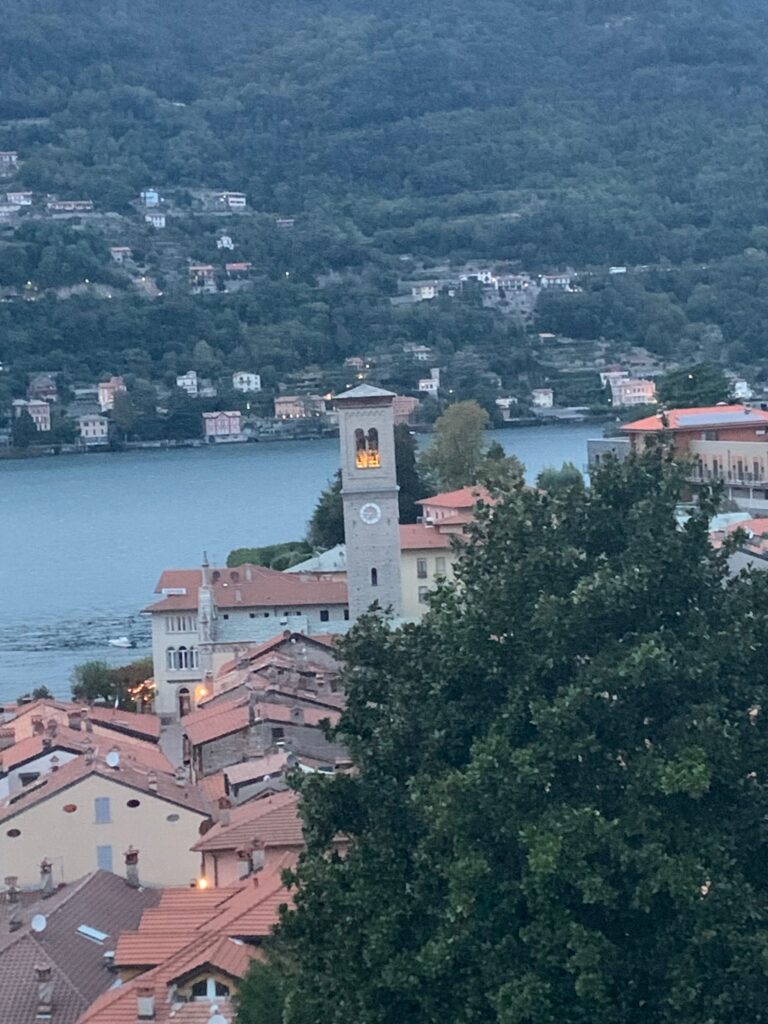
Money
The area, being part of Italy of course, uses the Euro but some stores and cafes accept Swiss Francs at the prevailing exchange rate. I didn’t use cash the entire time. Restaurants, trains, bus stations, supermarkets and cafes all accept Visa and Mastercard with tap or tap and pin or tap and sign.
Getting to the Lake
From Switzerland to Como:
- Train: I took the train from Switzerland, which I believe is the most convenient option. I travelled from Basel to Zurich to Lugano through spectacular Swiss scenery. I booked ahead and got good cheap fares but in the past I have travelled through Switzerland using The Swiss Travel Pass. This gives unlimited travel by train, bus and boat for three to 15 consecutive days or for a bit more 3, 4, 6, 8 or 15 freely selectable days within a single month. Trains stop at Como San Giovanni station, the main train station in Como.
- Bus: While the train is the primary mode of transport, Autokar Polska and Regiojet connect Como to Swityzerala dn on a weekly basis and there are kcoal bus services , from Swiss cities near the border. Buses may take longer than the train, but they can be a cost-effective option.
From Milan to Como:
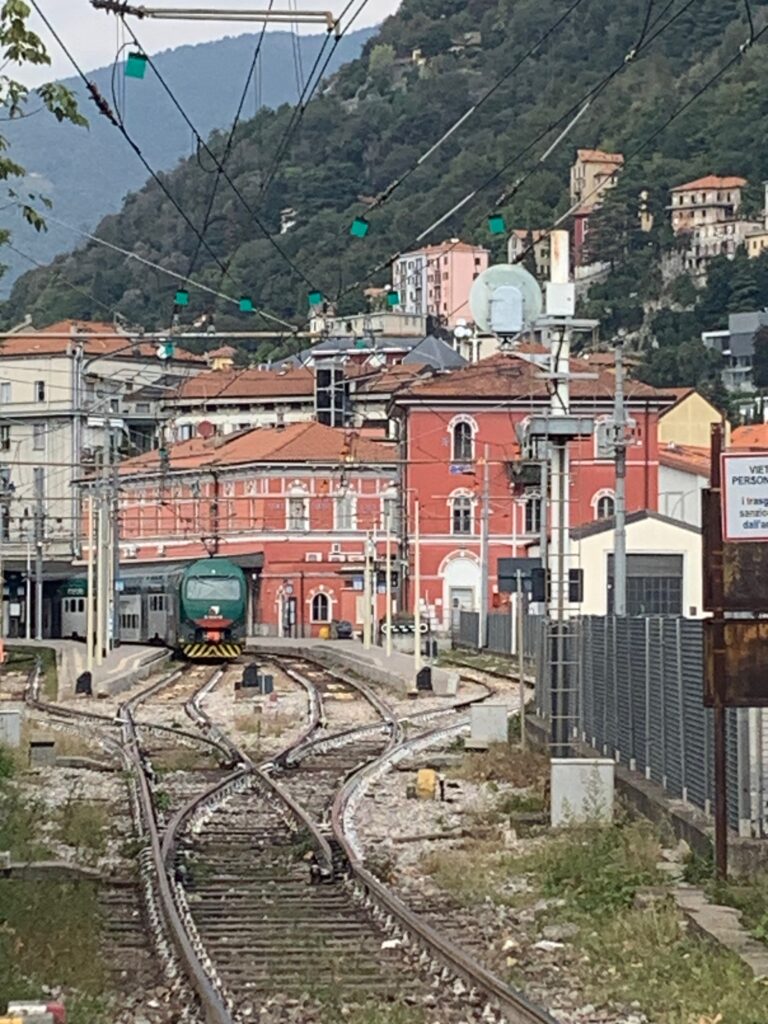
If you’re coming from Milan, the train is the most popular and efficient way to reach Como. From Milan Centrale, trains go to Como San Giovanni station in about 40 minutes. From Milan Cadorna, trains go to Como Lago Station. Some services require you to change and journey time is about an hour and 1o minutes. Trains run frequently throughout the day but can get crowded. Tickets are sold at ticket offices an dmchines at stations and on line.
Buses are also available from Milan to Como, but they are less common compared to the train.
You can drive but to be honest with the narrow narrow roads, such an adventure is not for the faint hearted! Taxis and shuttle vans connect Lugano airport and Milan’s three airports with the area. Some hotels provide their own pick-up services from the airports or the Como stations.
Getting Around
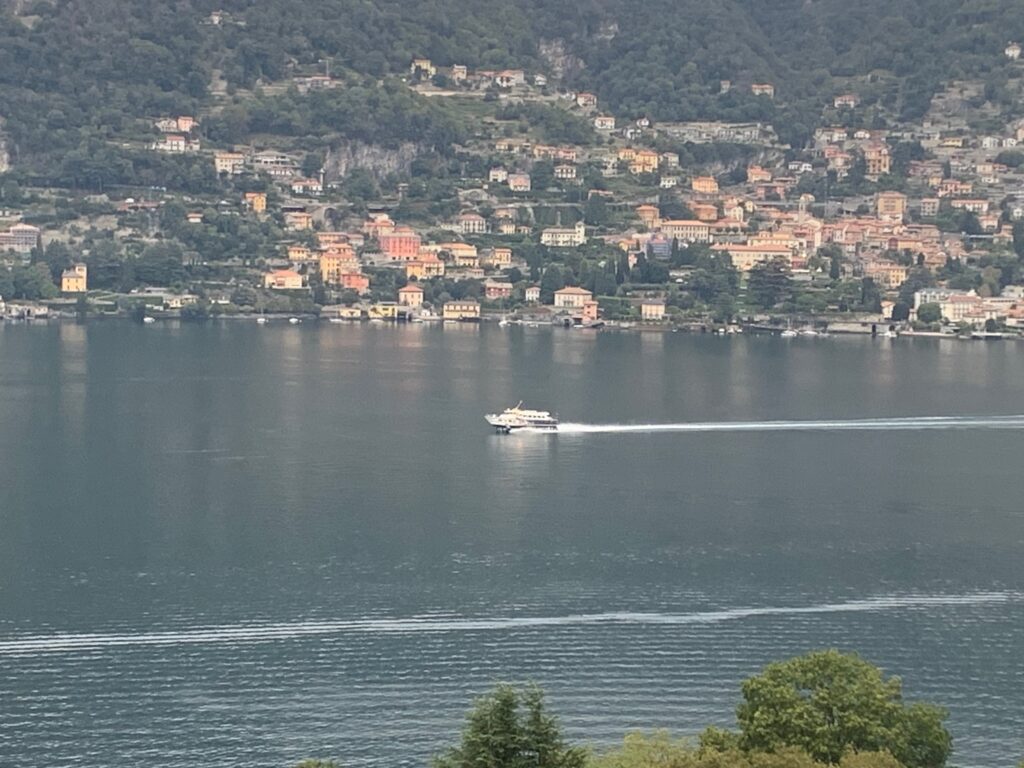
There are five transportation options available:
- Buses connect the main communities around Lake Como. However, I found the timetables to be sporadic, and services were often delayed. Buses were frequently crowded, and I even witnessed them skipping stops due to being too full. Tickets are available at the Como bus station and local shops. Sometimes drivers sell tickets, while other times they do not. Patience is essential when relying on buses.
- Lake Como has an extensive ferry service comprising slow ferries, fast ferries (Corse rapide), and car ferries known as “Traghetto,” all operated by Navigazione Laghi.
The primary route runs from Como to Tremezzo, Bellagio, and Cadenabbia year-round, with additional ferries during the summer season. In the summer, ferries also cover the stretch from Lecco to Bellagio. The regular service stops at every pier, offering scenic views but taking longer. Fast hydrofoils skip most of the smaller stops.
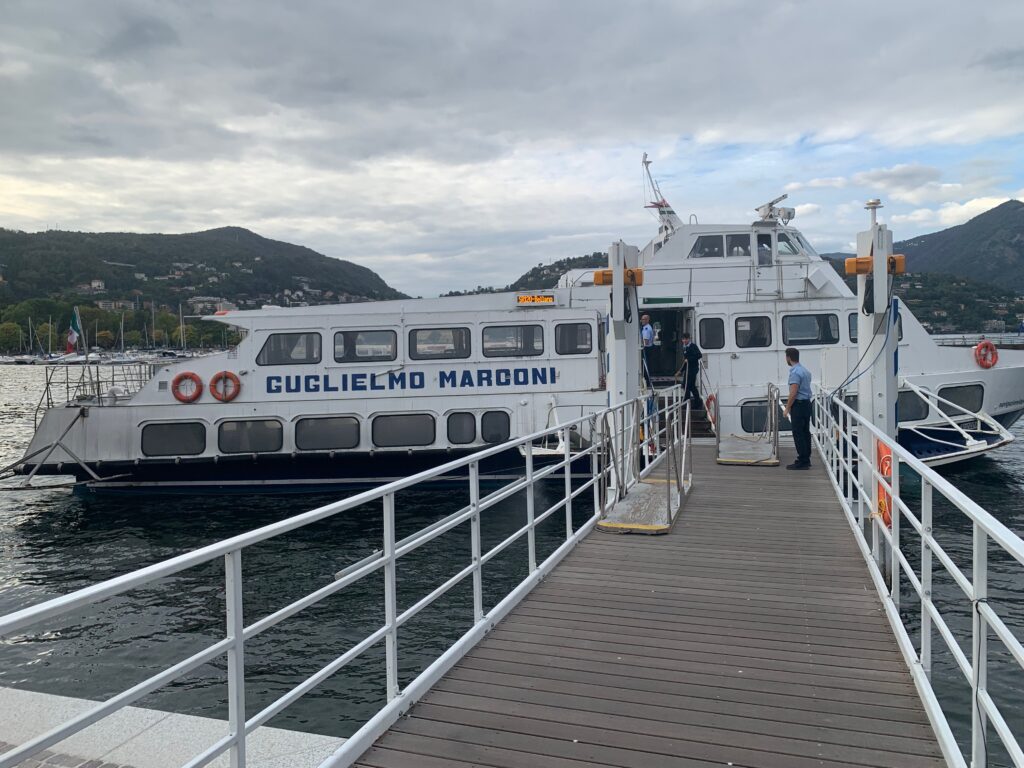
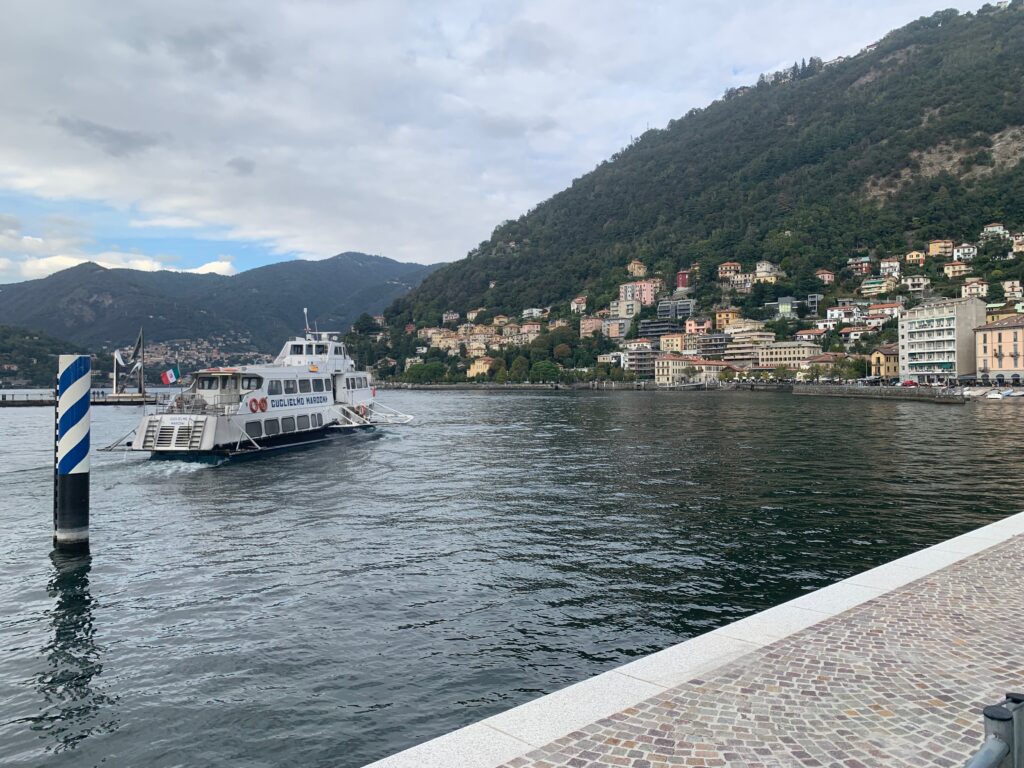
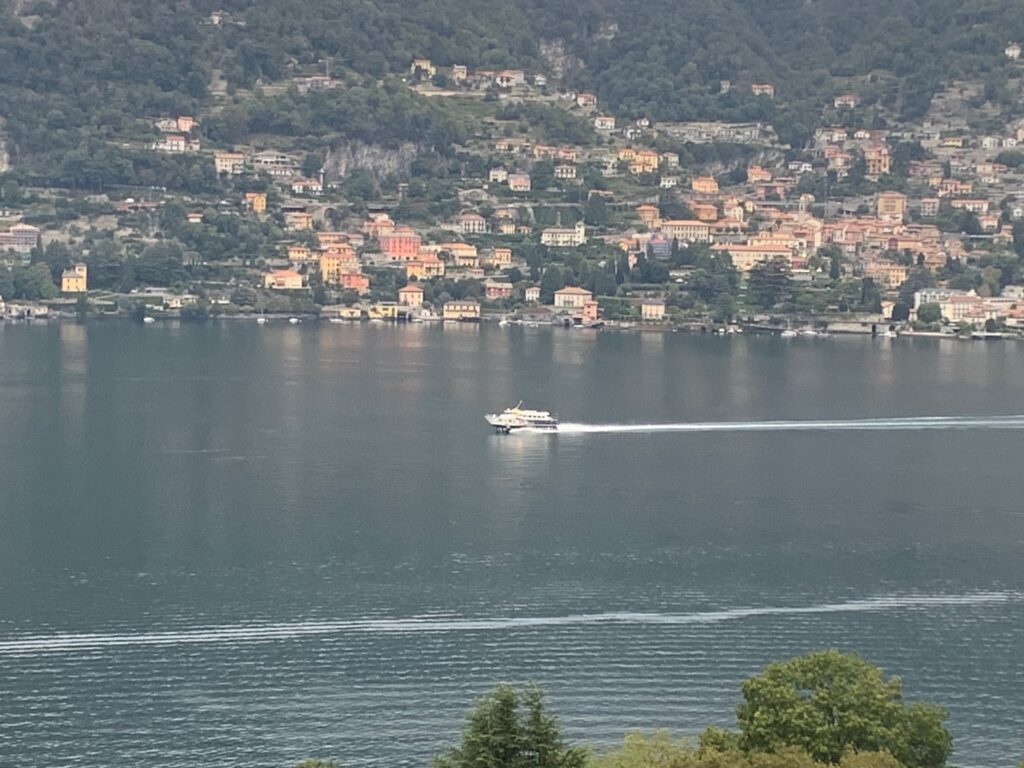
Car ferries connect Como to Bellagio, Menaggio, Varenna, and Cadenabbia.
Tickets for all services should be purchased before boarding from the pier side ticket offices. They all accept cash, debit, and credit cards. If there isn’t a ticket office, you can buy tickets on board with cash only and without a surcharge. If there is a ticket office, and you board without a ticket, they will sell you one with an additional €1 charge. In summer, come 20 minutes before departure time.
4. Private boats can be rented
5 Taxis do exist but are more limited in the Lake Como area. I recommend using tthe itTaxi app or Free Now which is the international taxi app). It’s almost impossible to use Uber in the Lake Como region. Uber primarily offers its premium services, such as Uber Black, Uber Lux, and Uber Van, in Milan and for trips between Milan and Como.
6. Another enjoyable way to explore the area is by walking from village to village. Note that the paths vary from narrow road side verges to steep mountain climbs.
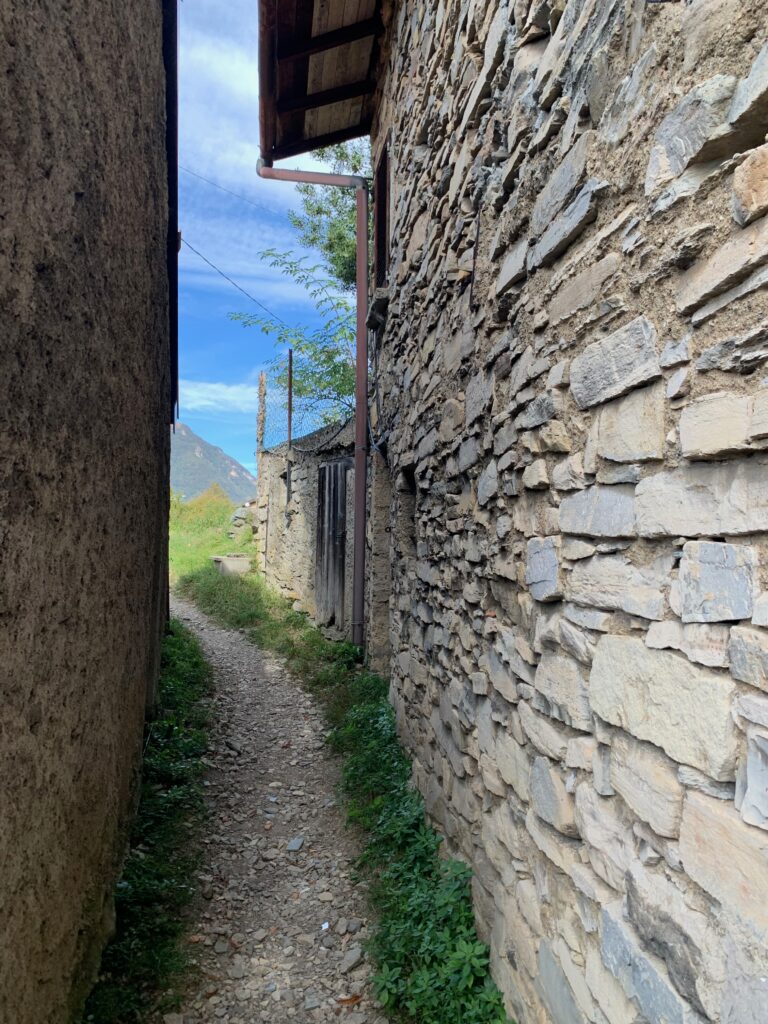
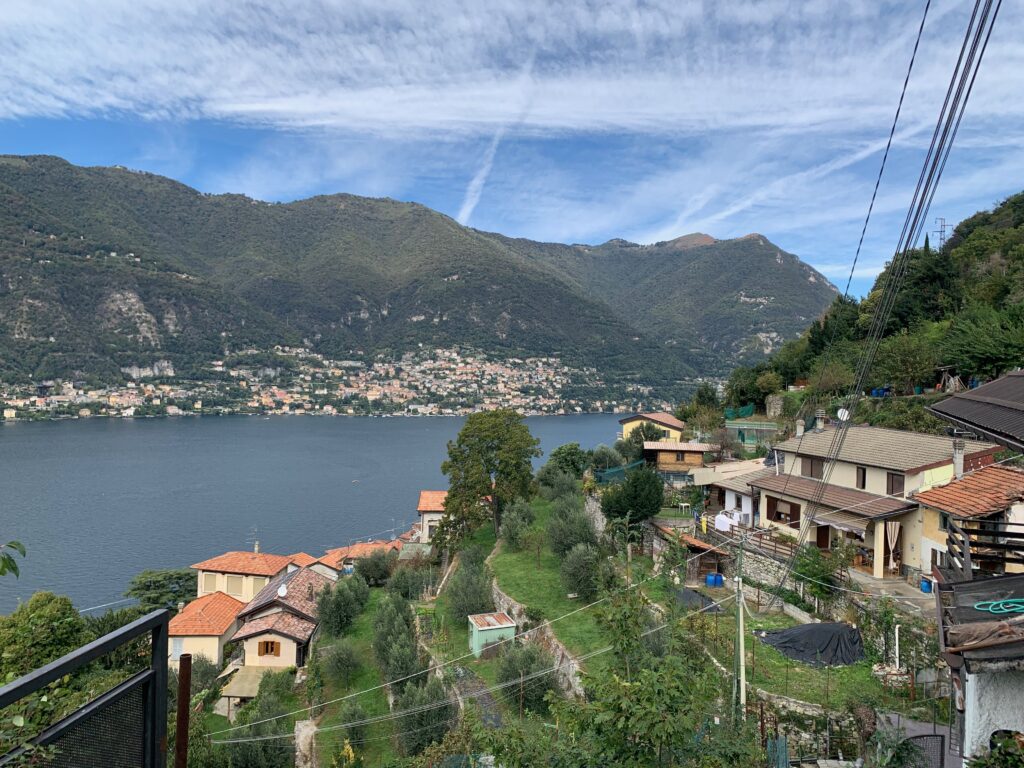
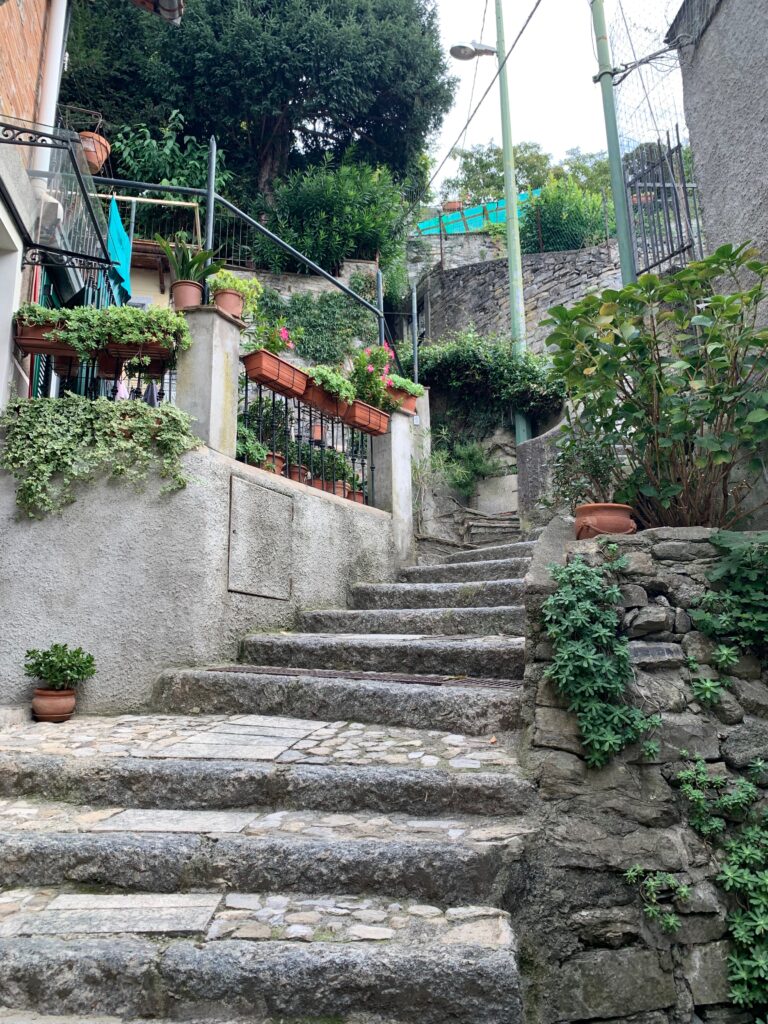
Where to Stay
The area offers a range of accommodation options. Lake Como and its surrounding areas provide a variety of accommodation options to suit different preferences and budgets. According to budgetyourtrip, the average hotel price in Como is around $US175. For travellers seeking budget-friendly options, you can find accommodations for around $US105. On the other hand, luxury-seekers can indulge in the area’s upscale offerings, with an average price of $US323 for luxury hotels in Como. There are plenty of guest houses on VRBO/Stays and Airbnb. Whether you’re looking for a cosy retreat, a wallet-friendly stay, or a lavish escape, Como has something for every type of traveller.
In Summary
Our stay at Lake Como was a splendid blend of tranquillity and exploration. The breathtaking landscapes, historical treasures, and delightful cuisine made this trip an unforgettable experience. Lake Como truly lives up to its reputation as one of Italy’s most enchanting destinations.


Leave a Reply